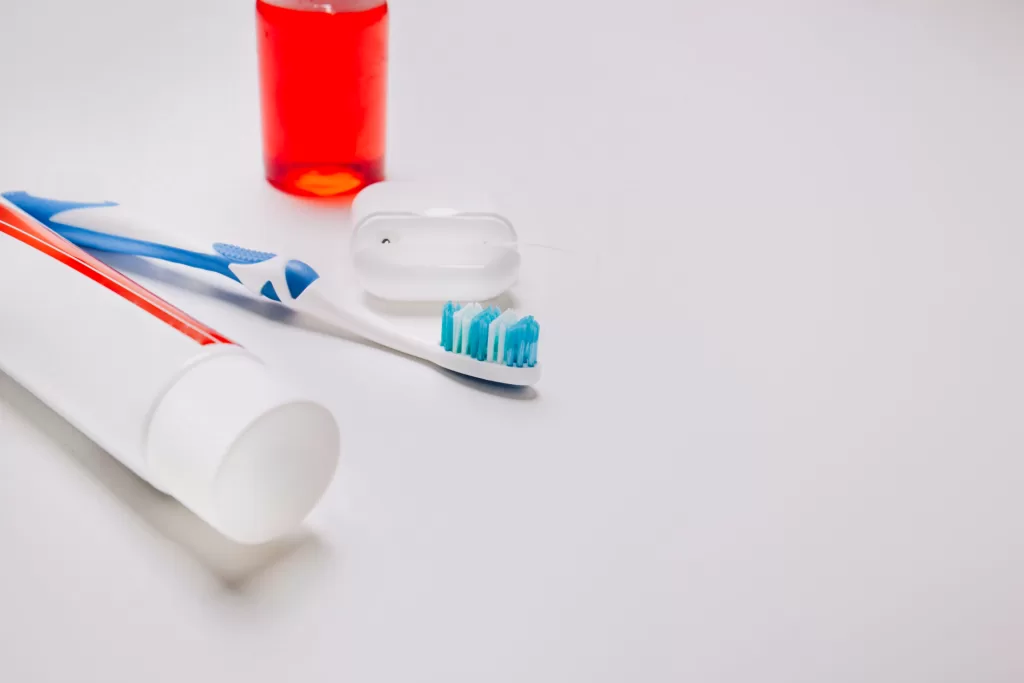Affinity Health, a leading provider of high-quality health coverage, explores five essential tips to help you choose the right toothbrush and toothpaste for your specific needs, ensuring you’re giving your smile the best care possible.
“As we celebrate National Oral Health Month, it’s the perfect time to focus on the foundation of good dental hygiene: your toothbrush and toothpaste,” says Murray Hewlett, CEO of Affinity Health.
“Choosing the right toothbrush and toothpaste is more important than most people realise. According to the National Library of Medicine, using the wrong type of brush can cause gum recession, and not all toothpastes contain the necessary ingredients to maintain cavity-free teeth.”
Affinity Health highlights some factors to consider:
Choosing The Right Toothbrush
Bristle Softness: Contrary to what you might think, stiffer bristles aren’t always better. Most dentists recommend soft-bristled toothbrushes as they are gentle on your gums and enamel. Medium and hard bristles can be abrasive, potentially leading to enamel wear and gum recession.
Head Size: The toothbrush head should be small enough to reach your teeth, especially the rear molars, comfortably. A toothbrush head that’s 1.27 cm wide and 2.54 cm tall will be sufficient for most adults. Consider a compact head size if you have a smaller mouth or find it challenging to reach your back teeth.
Handle Comfort: The most effective toothbrush you’ll use consistently, so comfort is vital. The handle should feel comfortable and provide a good grip, even when wet. Some toothbrushes have non-slip grips or ergonomic designs that can make brushing more comfortable.
Manual vs. Electric: Both manual and electric toothbrushes can be effective if used correctly. However, electric toothbrushes can be particularly beneficial for people with limited manual dexterity or those who tend to brush too hard. Many electric toothbrushes come with features like timers and pressure sensors to help improve your brushing technique.
ADA Seal of Acceptance: Choose toothbrushes with the American Dental Association (ADA) Seal of Acceptance. This seal ensures that scientific experts have independently reviewed the toothbrush for safety and effectiveness.
Choosing the Right Toothpaste
Selecting the right toothpaste can feel overwhelming, with countless options lining store shelves. Here’s what to consider:
Fluoride Content: Fluoride is a crucial ingredient in toothpaste as it helps prevent tooth decay by strengthening enamel. Unless your dentist advises otherwise, always choose a toothpaste that contains fluoride.
Specific Dental Needs: Consider any specific dental issues you may have, such as:
- Sensitivity: To assist in relieving sensitivity, use toothpastes that include potassium nitrate or strontium chloride.
- Whitening: If you’re concerned about stains, whitening toothpastes contain mild abrasives and chemical agents to remove surface stains.
- Gum Health: Toothpastes formulated for gum health often contain stannous fluoride or triclosan to fight gingivitis.
- Tartar Control: These types of toothpaste contain ingredients like pyrophosphates to prevent tartar buildup on teeth.
Abrasiveness: While some abrasiveness is necessary to clean teeth effectively, too much can wear down enamel over time. The relative dentin abrasivity (RDA) scale measures toothpaste abrasiveness. Look for toothpaste with an RDA value below 250, considered safe for daily use.
Flavour: While it might seem trivial, choosing a toothpaste flavour you enjoy can make you more likely to brush regularly and for the recommended two minutes. From classic mint to more unique flavours like cinnamon or even chocolate, there’s likely a flavour that suits your taste.
ADA Seal of Acceptance: As with toothbrushes, look for the ADA Seal of Acceptance on toothpaste.
Consider Your Age and Life Stage: Your oral care needs can change throughout your life, and your toothbrush and toothpaste should reflect that:
- Children: Choose age-appropriate toothbrushes with smaller heads and easy-to-grip handles. Use fluoride toothpaste appropriately (a smear for children under three, a pea-sized amount for children three to six).
- Teenagers: If wearing braces, consider orthodontic toothbrushes designed to clean around brackets and wires effectively.
- Adults: Choose products that address your specific needs, whether sensitivity, gum health, or whitening.
- Seniors: An electric toothbrush may be more beneficial as manual dexterity decreases with age. Toothpaste for dry mouth can be helpful if you’re experiencing reduced saliva production.
Don’t Forget About Sustainability
As we become more environmentally conscious, consider the sustainability of your oral care products:
- Choose toothbrushes made from sustainable materials, such as bamboo.
- Some companies offer toothbrush recycling programmes.
- Consider toothpaste tablets or powders that come in recyclable or compostable packaging.
- Electric toothbrushes with replaceable heads can reduce plastic waste compared to disposable manual brushes.
Consult Your Dentist
While these tips provide a good starting point, your dentist is your best resource for personalised oral care advice. They can recommend specific products tailored to your oral health needs, considering factors such as your risk of tooth decay or gum disease, any ongoing dental treatments, medication side effects that might affect your oral health, and your brushing technique and habits.
Conclusion
This National Oral Health Month, take some time to reassess your oral care tools. Are they meeting your current needs? Could an upgrade improve your oral health? You’re investing in your smile and overall health by making informed choices about your toothbrush and toothpaste. Lastly, while the right tools are important, they’re only effective when used correctly. Brush twice daily for two minutes each, floss daily, and see your dentist regularly for checkups and expert cleanings. Here’s to a healthy, happy smile!






























